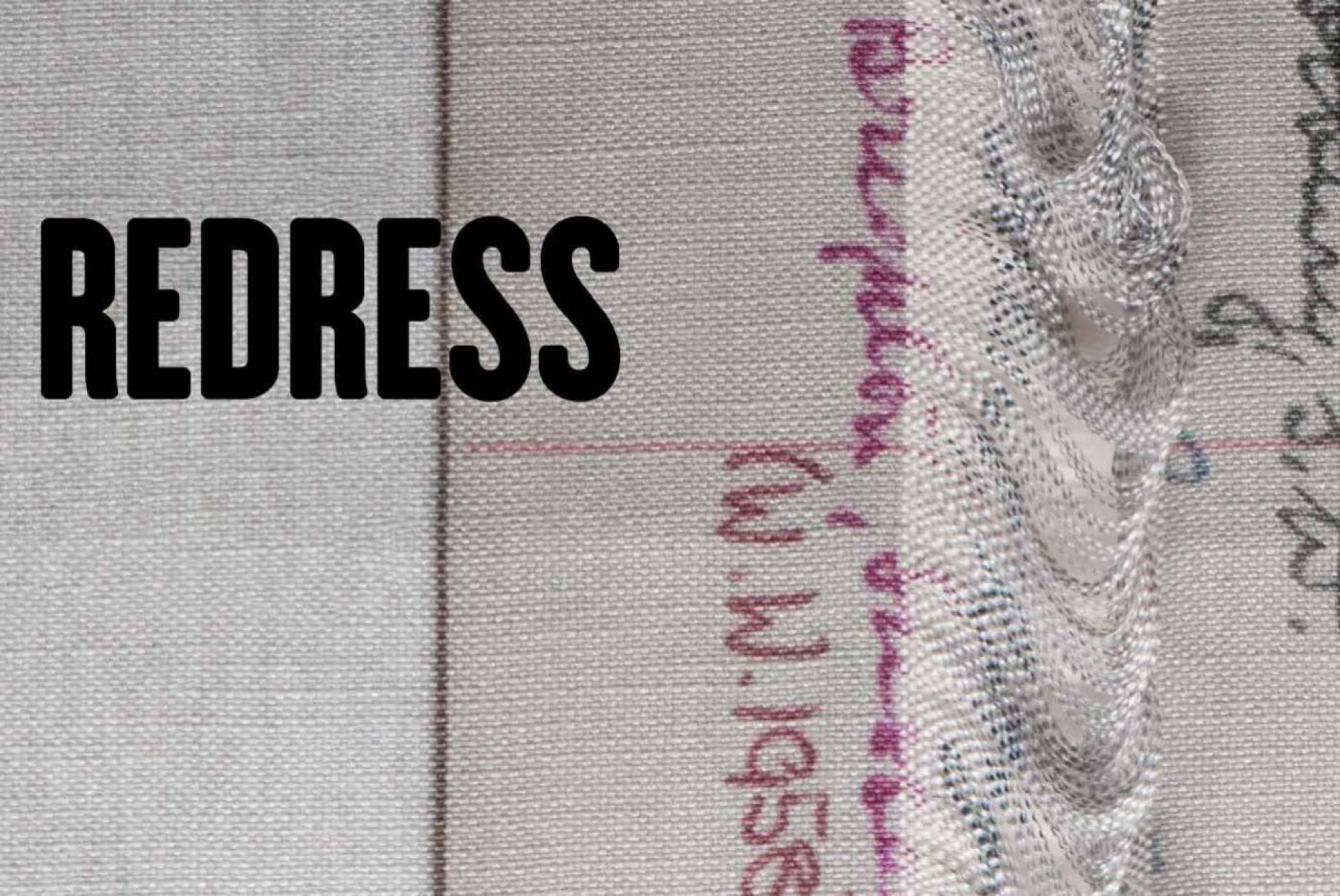Redress
Redress is the result of collections-based research completed by Slade artists as part of UCL Art Museum’s tenth annual artist-in-residence programme.
Featured Media


Redress is the result of collections-based research completed by Slade artists as part of UCL Art Museum’s tenth annual artist-in-residence programme.
Redress, an exhibition and series of public events weaving new life into the Slade School of Fine Art’s once prestigious Drapery Drawing Prize. Sophie Bouvier Ausländer, Katherine Forster, Seungwon Jung, Zeinab Saleh and Naomi Siderfin consider drapery drawing in its broadest terms, including cloth, clothing, fabrics and fashion, to redress the contemporary relevance of this long-standing art school tradition.
Redress is the result of collections-based research completed by Slade artists as part of UCL Art Museum’s tenth annual artist-in-residence programme.
Performance
Action: Dawn is breaking, performance, 4th October 1-2pm
UCL Art Museum/Slade School of Fine Art Collaboration
UCL Art Museum’s annual collaboration with the Slade School of Fine Art began in 2008 with a challenge to all current Slade students to develop their own practices while taking the time to appreciate what has gone on before. Over one term artists are given special access to thousands of remarkable and historically important artworks from the Museum’s collections. During ten years this has resulted in extended collections-based research by over 100 resident artists – all of whom have revalued past masters to create contemporary works in a range of media, including painting, sound, video and performance. Previous collaborations include: Sequel (2009), Transfer (2010), Moreover (2011), Vincula (2012), Duet (2013), Second Person Looking Out (2014), Re-launch (2015), Vault (2016), The composition has been reversed (2017).
Slade Prizes
Slade prizes have been awarded annually by the Slade Professor from the establishment of the School in 1871 as an important recognition of the quality of a student’s work. Women received recognition through the prize system on a relatively equal footing to their male counterparts, resulting in artwork by women comprising 45% of UCL’s Slade Collections.
From 1897 the School retained the winning works and these now comprise the Slade Collections. Included as part of the Slade’s prize system are awards for Figure Drawing, Figure Painting, Head Drawing, Head Painting and Summer Composition, with the Drapery Drawing Prize first appearing in 1918, and then intermittently until the 1950s. Drapery drawing has historically played an important role in artistic training, where it would have supported students’ ability in portraiture as well as the Summer Composition Prize, a more traditional painting prize, with set narratives derived from history, literature or the Bible.
Today, the William Coldstream Memorial Prize is awarded annually by the Slade Professor and prize-winning works are retained by UCL Art Museum.
Artists
Katherine Forster works with many different forms of textile art to confront the role of female artistic labour. Here embroidery, normally associated with the quiet practice of sitting, head bowed, becomes a visual presence, loudly occupying the room. The text – an extract from a letter the French novelist Colette (1873-1954) wrote to her daughter, in which she expresses her dislike of sewing – becomes a protest slogan. Forster physically redresses the space with her elaborate drapery, thereby correcting the balance in the representation of women’s artwork in museums.
Seungwon Jung explores at the Drapery Drawing Prize to revalue the unrecorded and neglected female artists who in 1918 dominated the prize system. She works with fragmented photographic images printed on fabrics, destructs them by removing the threads and then stitches them back, collecting the fragments layer by layer. Through the creation of empty space and accumulation, she considers the gaps in our existence, memory and consciousness. Her process highlights the omissions in our knowledge regarding these women, but also the ways their traces can unconsciously influence how we shape the past.
Zeinab Saleh uses textiles, methods of collage and photography to make work that references the personal as political. She draws upon various cultural sources and subcultures to create a highly individualised subtext. During her residency she explored issues of race, women and power and sourced the collection for links to her project, and ultimately her own idiosyncratic identity. Here she merges references to historical artworks with well-known logos and brands from the modern age to produce a bold personal work that explores themes of labour, economy and the digital age.
Sophie Bouvier Ausländer & Naomi Siderfin collaborative work The Tacit and The Tangible resonates with selected drawings from the Drapery Drawing Prize. Here ‘redress’ functions as a conceptual framework, with Siderfin addressing the more tacit practices of making, responding to drawings of women in action, to produce a series of performances (see programme), whilst Bouvier Ausländer dresses poses, expressions and narratives into new tangible artefacts, which are incorporated in turn by Siderfin. Developed in collaboration, their project prompts experimentation through the merging of archival, art and performance processes.